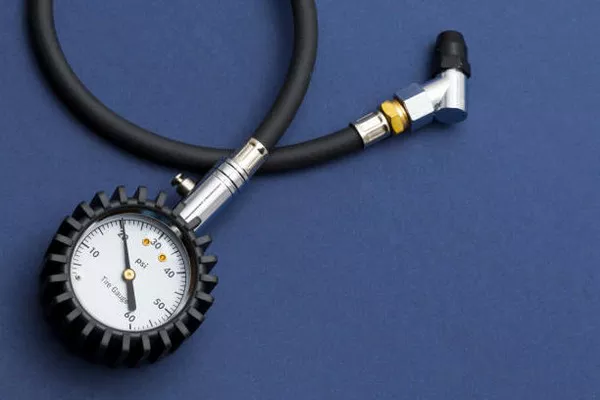Air pressure gauges are essential instruments in the field of mechanical engineering and various industrial applications, designed to measure the pressure exerted by air or gases within a system. Accurate pressure measurement is critical for ensuring safety, operational efficiency, and performance monitoring in pneumatic systems, HVAC units, automotive engines, and manufacturing plants.
At their core, air pressure gauges provide a visual or digital representation of the air pressure in a system, enabling operators and engineers to make informed decisions. This article delves into the working principles of air pressure gauges, explores their different types, and discusses their key applications. Along the way, it integrates relevant concepts from Instrumentation to give a comprehensive technical understanding.
What Is Air Pressure?
Before discussing air pressure gauges, it is important to understand the nature of air pressure itself. Air pressure is the force exerted by air molecules as they collide with the walls of their container or environment. This force is measured in units such as pascals (Pa), pounds per square inch (psi), bar, or atmospheres (atm).
Air pressure is a dynamic parameter affected by altitude, temperature, volume, and gas composition, making its measurement vital in a wide range of engineering and industrial contexts.
How Do Air Pressure Gauges Work?
Air pressure gauges function by converting the physical pressure of air into a readable output, often mechanical or digital. The basic principle involves sensing the force exerted by the air and translating it into displacement, which then moves a pointer or generates an electronic signal.
The essential components of a typical air pressure gauge include:
- Sensing Element: This is the part directly exposed to the air pressure, such as a Bourdon tube, diaphragm, capsule, or bellows.
- Mechanical Linkage or Transducer: Converts the deformation or displacement of the sensing element into a readable output.
- Display Unit: Can be an analog dial, digital screen, or output signal for further processing.
Common Types of Air Pressure Gauges
Bourdon Tube Pressure Gauge
The Bourdon tube pressure gauge is one of the most widely used types. It consists of a curved, hollow metal tube that tends to straighten when internal pressure increases. This movement is mechanically linked to a pointer on the dial, providing a direct reading of the pressure.
This design is favored for its reliability, robustness, and wide pressure range.
Diaphragm and Capsule Pressure Gauges
Diaphragm gauges utilize a flexible membrane that deflects under pressure. This deflection moves a pointer or triggers an electronic sensor. Capsule gauges, on the other hand, use two diaphragms sealed together, expanding or contracting with pressure changes. Both types are well-suited for measuring low pressures or vacuum conditions.
These gauges are often preferred in applications where small pressure changes need to be detected accurately.
Digital Pressure Gauges
Digital pressure gauges utilize electronic sensors such as piezoelectric or strain gauge elements to detect pressure changes. These sensors convert pressure into an electrical signal, which is processed and displayed digitally.
Advantages include high accuracy, ease of reading, and the ability to interface with control systems.
Piston Gauges
Piston gauges measure pressure by balancing the force exerted by air pressure against a known mass applied on a piston. This design offers exceptional precision, commonly used for calibration purposes.
Applications of Air Pressure Gauges
Air pressure gauges are indispensable across various sectors, including but not limited to:
- Industrial Pneumatics: Monitoring pressure in pneumatic tools and machinery.
- HVAC Systems: Ensuring optimal airflow and system performance.
- Automotive: Measuring tire pressure, engine intake, and fuel system pressures.
- Aerospace: Critical pressure readings for safety and performance.
- Medical Devices: Regulating oxygen tanks and respiratory equipment.
Proper pressure measurement directly affects safety, efficiency, and regulatory compliance.
Factors Affecting Air Pressure Gauge Selection
Choosing the correct pressure gauge depends on several factors, such as:
- Pressure Range: The maximum and minimum pressure to be measured.
- Accuracy Requirements: Higher precision gauges may be necessary for critical processes.
- Environmental Conditions: Consideration of temperature, vibration, humidity, and corrosive atmospheres.
- Output Type: Analog versus digital readout, or integration with control systems.
Maintenance and Calibration
Regular maintenance and calibration of air pressure gauges are essential for accuracy and longevity. Calibration involves comparing the gauge’s readings against a standard, such as a Dead Weight Pressure Gauge, and making necessary adjustments.
Proper installation, protection from mechanical shocks, and routine inspections can prevent common issues such as leakage, mechanical wear, and sensor drift.
Conclusion
Air pressure gauges are fundamental instruments that enable precise measurement and control of air pressure across numerous industries. Understanding their working principles, types, and applications ensures proper gauge selection and use, which is crucial for safety, performance, and reliability.
From mechanical designs like Bourdon tubes to advanced digital gauges, the evolution of air pressure measurement continues to support technological progress and industrial innovation.
FAQs
What is the difference between a Bourdon tube pressure gauge and a diaphragm pressure gauge?
A Bourdon tube gauge uses a curved tube that straightens under pressure to move a pointer, making it suitable for a wide range of pressures and rugged environments. Diaphragm gauges use a flexible membrane that deflects with pressure changes, often better for low-pressure or vacuum applications.
How often should air pressure gauges be calibrated?
The calibration frequency depends on the application, usage intensity, and regulatory requirements but typically ranges from six months to a year. High-precision or safety-critical systems may require more frequent calibration.
Can digital pressure gauges replace traditional mechanical gauges?
Digital gauges offer higher accuracy, better readability, and easier integration with automated systems, but mechanical gauges remain popular due to their simplicity, reliability, and no requirement for power supply. The choice depends on the specific application and operational conditions.
What are the common units used in air pressure measurement?
Common units include pascals (Pa), pounds per square inch (psi), bar, atmospheres (atm), and millimeters or inches of mercury (mmHg/inHg), depending on regional and industrial standards.

